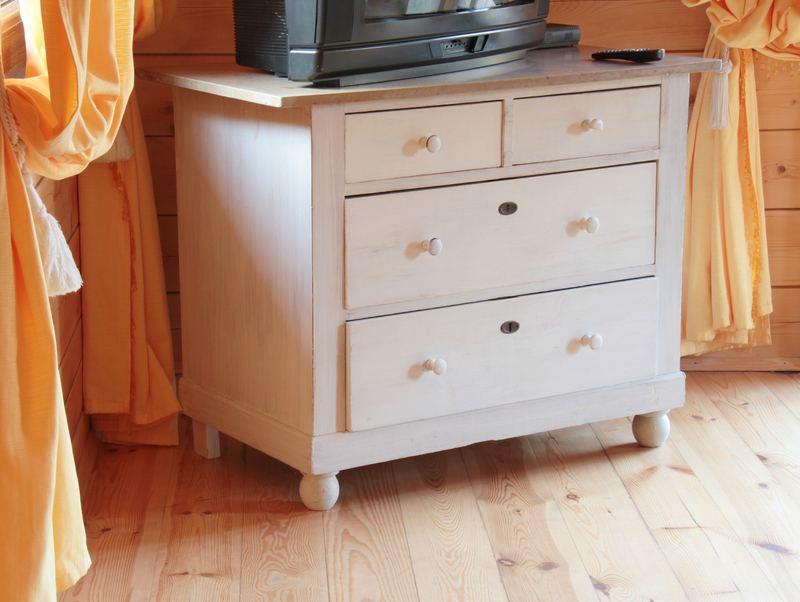Intensive Clutter Removal Strategies for Hoarder House Transformations
Hoarder houses present unique and daunting challenges for owners, loved ones, and professional cleaners alike. When clutter accumulates over many years, it not only affects the appearance of a home but can also cause severe health and safety hazards. Implementing intensive clutter removal strategies is crucial to restoring these spaces into safe, comfortable, and liveable environments. This comprehensive guide will walk you through efficient and effective methods for transforming a hoarder house, optimizing your space and well-being.
Understanding the Challenges of Hoarder House Clutter
People struggling with hoarding disorder find it extremely difficult to discard possessions, regardless of their actual value. This leads to excessive accumulation, which in turn results in cramped living conditions, blocked pathways, and unsafe environments. Before diving into hoarder house clean-up, it's important to understand some of the main challenges:
- Emotional Attachments: Many items may hold sentimental or perceived value.
- Volume of Items: Years or decades of accumulation can result in overwhelming amounts of clutter.
- Health Risks: Mold, dust, pests, and even structural damage can hide beneath the mess.
- Safety Concerns: Blocked exits, fire hazards, and tripping risks must be addressed promptly.
The Importance of Specialized Hoarder Home Cleaning
Cleaning out a hoarder home requires more than traditional housekeeping. Intensive clutter removal is a systematic process that often involves professionals, specialized equipment, and sometimes even mental health support.
- Support Systems: Family, friends, and mental health professionals can help manage the emotional aspect.
- Professional Cleaning Teams: These experts have experience with biohazards and stubborn buildup.
- Customized Approaches: No two hoarding situations are identical - personalized plans ensure the most effective results.

Step-By-Step Clutter Removal for Hoarder House Transformations
1. Preparation and Safety First
*Before any actual clearing begins, ensure that you have the necessary supplies and a plan in place.* Safety equipment is essential for handling the unknowns that often exist in a hoarder home.
- Personal Protective Equipment (PPE): Gloves, masks, and sturdy footwear are essential.
- Cleaning Supplies: Garbage bags, boxes, cleaning agents, and disinfectants.
- Lighting and Ventilation: Make sure the area is well-lit and ventilated to prevent exposure to harmful substances.
- Assess the Structure: Check floors, stairs, and walls for stability before proceeding.
2. Prioritize Safety Hazards
Identify and address immediate threats to health and safety, such as:
- Blocked Exits and Hallways: Ensure clear access to exits in case of emergencies.
- Rotting Food, Mold, or Infestations: Remove perishable items and treat affected areas promptly.
- Sharp or Dangerous Objects: Carefully dispose of broken glass, needles, or hazardous chemicals.
3. Establish Sorting Stations
Create designated areas as you sort through items. An effective sorting system can accelerate the decluttering process.
- Keep: Items with genuine sentimental or practical value, and those requested by the homeowner to remain.
- Donate: Gently-used goods suitable for donation.
- Trash/Recycle: Broken, soiled, expired, or otherwise unusable items.
- Hazardous Waste: Paint, batteries, medical sharps, and chemicals require special disposal.
4. Intensive Room-by-Room Clutter Removal
Tackle one room at a time. This approach prevents the task from becoming too overwhelming and allows for visible progress. Key steps for transforming a hoarder house include:
- Begin with entry points and key passageways to regain mobility and safety.
- Address kitchens and bathrooms next due to hygiene and health importance.
- Bedrooms and living spaces follow, prioritizing areas most heavily used.
- Finish with attics, basements, garages, and other storage areas.
Best Practices for Intensive Hoarder Clutter Removal
Set Realistic Goals and Timelines
*Rome wasn't built in a day, and neither is a decluttered home.* Intensive hoarder house transformations can take days, weeks, or even months, depending on the level of accumulation.
- Establish daily or weekly goals with measurable outcomes.
- Document progress with notes or photos to keep morale high.
- Allow for regular breaks to prevent emotional and physical burnout.
Use the "Four-Box Method"
This simple yet powerful approach involves labeling four large boxes or bins: Keep, Donate, Trash, Other Room. As items are handled, quickly assign them to their appropriate category. This system:
- Simplifies decision-making, reducing hesitation.
- Encourages consistent progress by minimizing second-guessing.
- Keeps focused on intensive clutter removal outcomes rather than mulling over each item indefinitely.
Break Down Large Projects into Small Tasks
Tackling an entire home can feel impossible. Focus instead on small sections -- a single drawer, shelf, or closet at a time. This strategy provides quick wins, boosting momentum and morale.
Assign Roles When Working in Teams
If you're working with family, friends, or a professional hoarder clean-up service, assign specific roles to each participant:
- Team leaders overseeing safety and progress
- Sorters handling item categorization
- Movers for hauling out debris or bagged items
- Cleaners for sanitizing and restoring rooms
Essential Tools and Supplies for Intensive Hoarder House Cleaning
Having the right tools can mean the difference between frustration and efficient progress. Here is a list of recommended supplies for a thorough hoarder home clean-out:
- Heavy-Duty Trash Bags: Ideal for disposing of unsalvageable debris.
- Cardboard Boxes and Bins: Essential for sorting donations and items to keep.
- Personal Protective Equipment: Including gloves, masks, safety goggles, and durable shoes.
- Cleaning Agents: Disinfectants, air fresheners, and multi-surface cleaners.
- Hand Tools: Dustpans, brooms, mops, vacuum cleaners, and scrapers.
- First Aid Kit: Accessible in case of minor injuries.
- Portable Lighting: For poorly lit areas or basements.
- Heavy Lifting Equipment: Dolly carts or hand trucks for large items.
Psychological Strategies for Supporting Hoarder House Occupants
Work with Compassion and Empathy
*The emotional aspect is as important as the physical when it comes to intensive clutter removal for hoarder houses.* Many occupants experience shame, anxiety, or guilt associated with decluttering. To ensure lasting change:
- Engage in open, non-judgmental communication.
- Offer reassurance and respect the owner's pace within reasonable boundaries.
- Consider involving a therapist or support group for ongoing help.
Avoid Shaming or Rushed Disposal
Rapid, forced clean-outs can cause trauma or resistance. Instead, encourage the individual to participate in decision-making and celebrate each milestone, no matter how small.
When to Call in Professional Hoarding Clean-Up Services
In severe cases, professional intervention is necessary. Signs that it's time to call in expert help include:
- Biohazards like bodily fluids, animal droppings, or dangerous mold
- Structural damage or unsafe entry/exit points
- Overwhelming amounts of clutter exceeding family or volunteer abilities
- Eviction or compliance with local health ordinances is pending
Professional hoarder house cleaning specialists bring experience, industrial equipment, and sensitivity to these challenging projects. They also work confidentially, upholding the dignity of the client throughout the process.
Post-Cleaning Restoration: Transforming a Hoarder House into a Home
Deep Cleaning and Disinfection
Once the clutter is gone, a thorough deep clean is required for every surface - floors, walls, ceilings, and fixtures. This eliminates remaining bacteria, allergens, and odors.
Repairs and Renovations
Extreme hoarder houses may require repairs due to damage or neglect. Common needs include:
- Replacing damaged flooring
- Repairing walls or ceilings
- Restoring plumbing or electrical systems
- Painting and cosmetic updates
Implementing Long-Term Clutter Prevention Strategies
Achieving a clean and organized home is only the beginning. For true hoarder house transformation, it's critical to introduce maintenance habits:
- Establish a regular cleaning schedule.
- Implement clear storage systems, such as bins and shelves.
- Encourage ongoing donation or recycling of unneeded items.
- Schedule periodic check-ins with family, support groups, or therapists.

Tips for Maintaining a Clutter-Free Environment After Transformation
Adopt Minimalist Principles
Owning fewer items makes it easier to keep spaces organized. Evaluate future purchases carefully and avoid impulse buys.
Set Clear Boundaries for Incoming Items
Develop a one-in, one-out policy: for every new item brought into the home, an old one must be donated or discarded.
Use Visible, Accessible Storage
Transparent bins and open shelves prevent "out of sight, out of mind" clutter buildup.
Conclusion: The Rewards of Intensive Clutter Removal for Hoarder Houses
Transforming a hoarder house through intensive clutter removal and systematic cleaning is a life-changing process. Although challenging, the outcome brings renewed safety, comfort, and pride in one's home. With patience, compassion, and the right strategies, hoarder homes can be successfully restored and maintained.
If you or a loved one is facing the daunting prospect of a hoarder house cleanout, remember that help is available. Whether you undertake the process yourself or enlist professional services, the key is to start - one item, one room, one day at a time. The transformation is not only possible; it's a gift of a fresh start.
```